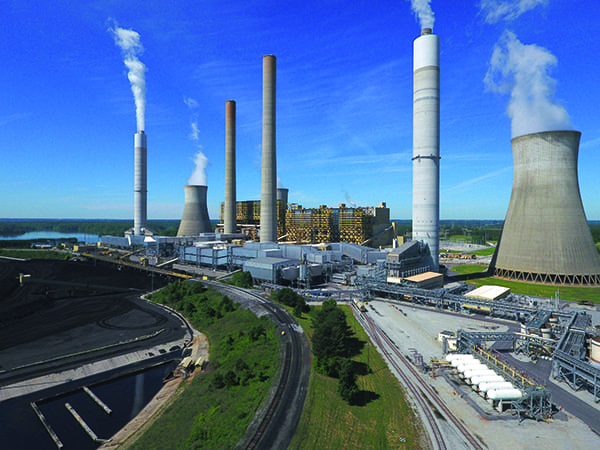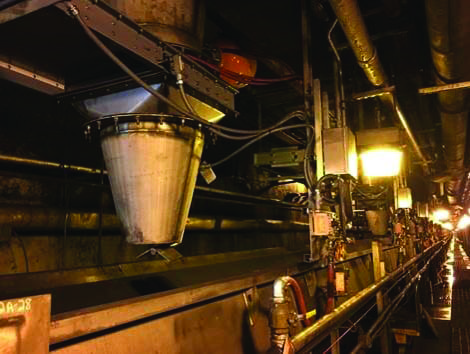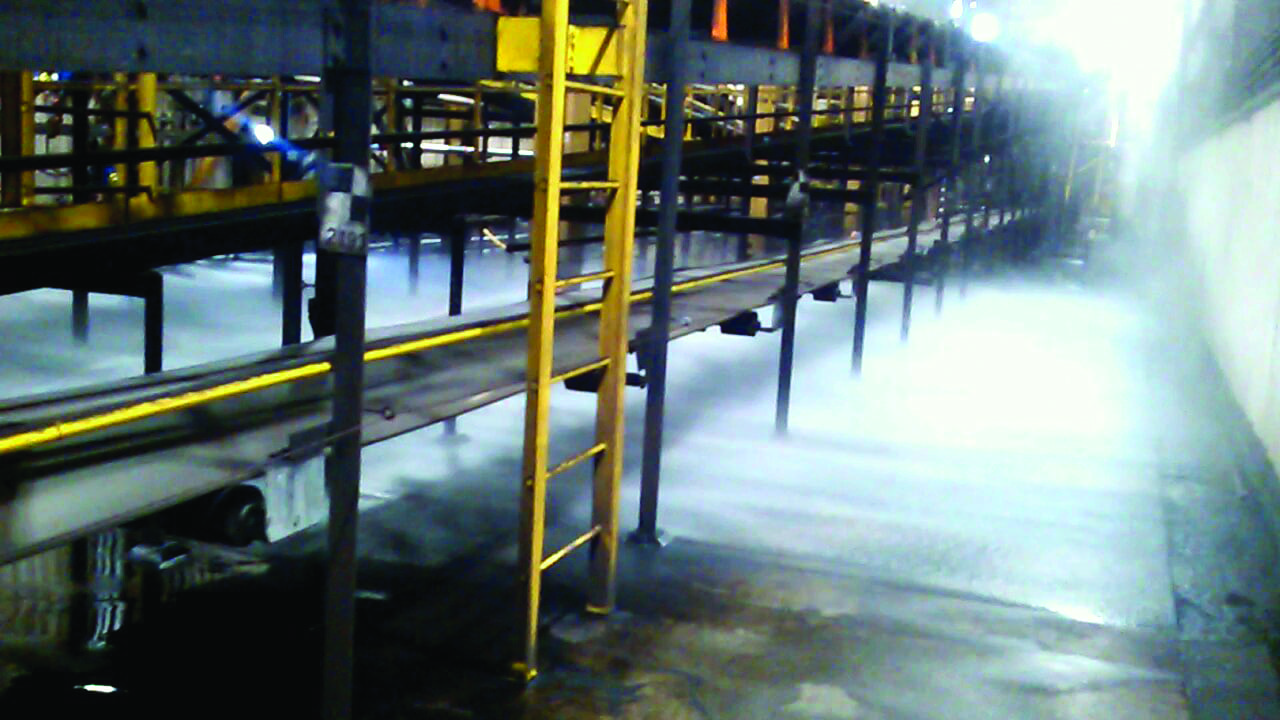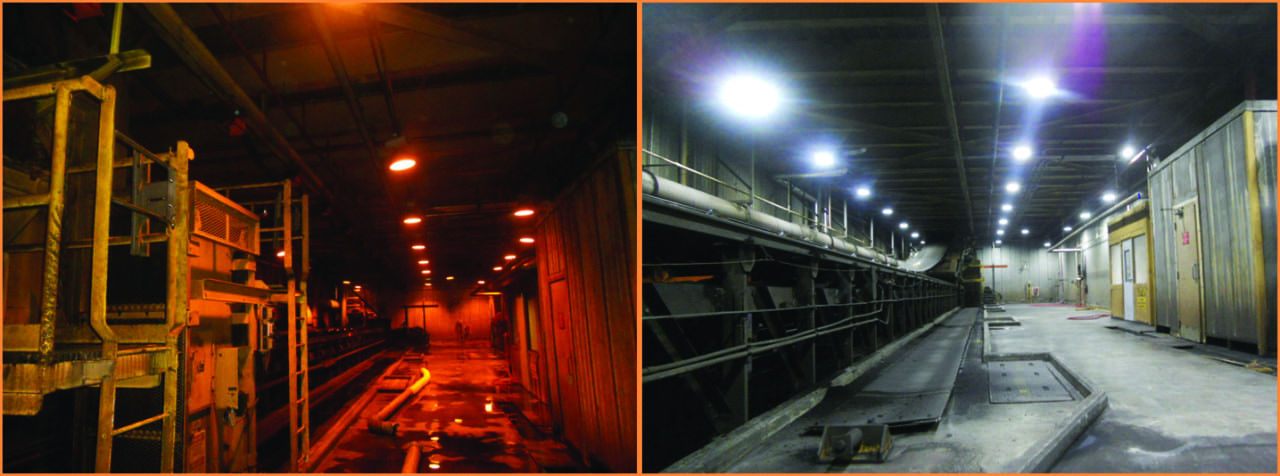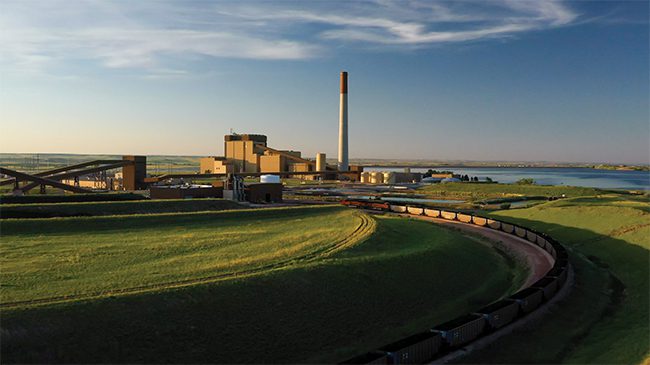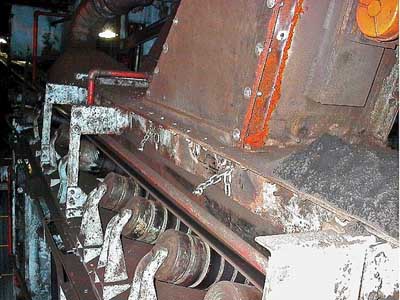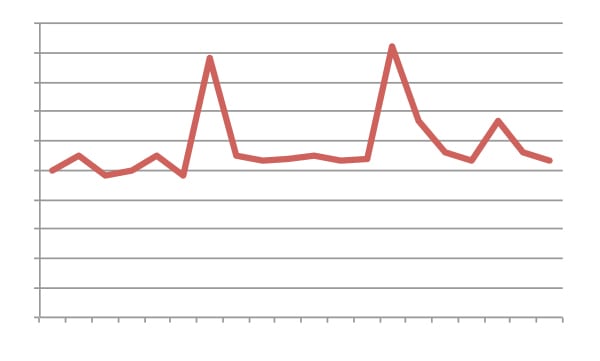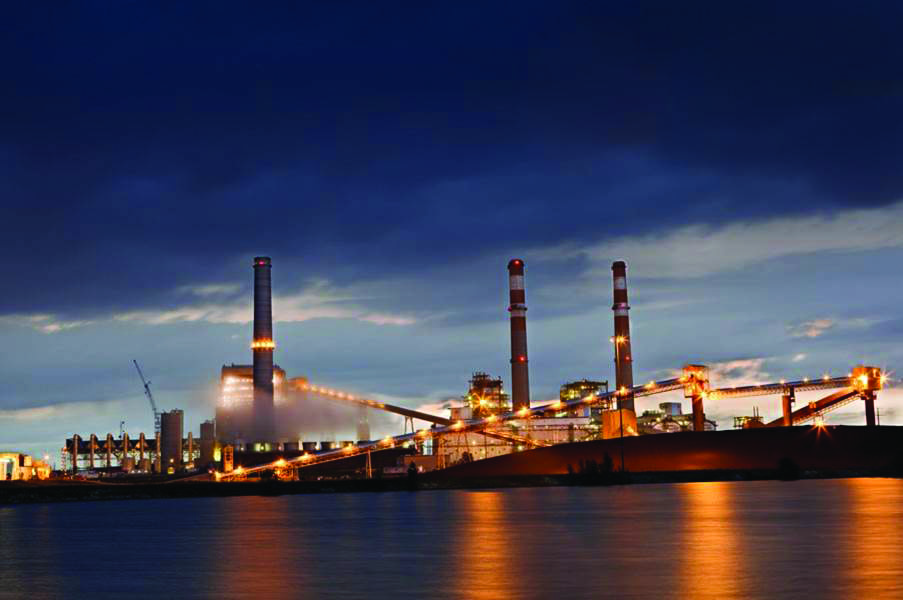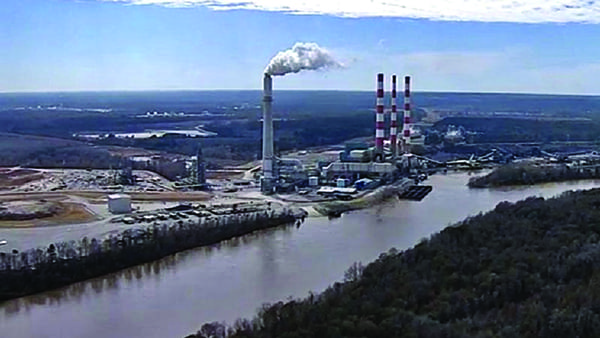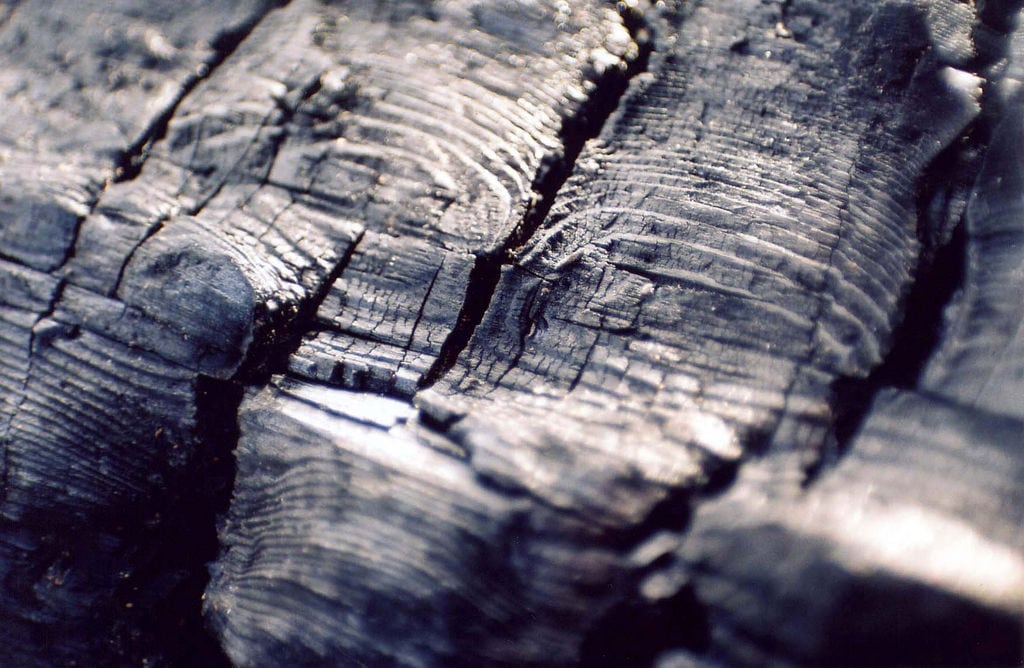Southern Co.’s Plant Scherer was chosen as the 2017 Powder River Basin Coal Users’ Group Plant of the Year based on a rigorous selection criteria, including safety, fire protection, and risk reduction benchmarks. The plant’s dedicated workforce implemented a strategy utilizing excellent maintenance planning and execution processes, and completed several important capital improvement projects that led to the achievement.
It’s not uncommon for conditions to slip as a power plant ages. As time progresses, “shiny and new” turns to “dull and old.” Previously reliable equipment begins to fail and, in some cases, repairs never seem to result in like-new performance. As a plant nears retirement, you might even hear an old-timer remark that the only thing holding the place together is baling wire and binder twine, although duct tape is more likely to be the glue these days.
There is something to be said for old-fashioned ingenuity, but in today’s modern world, completing maintenance in accordance with manufacturer’s guidelines is undoubtedly a better option. Although Plant Scherer was certainly not limping through life held together by twine, the 35-year-old facility had begun showing its age when Johnny Howze III took over as plant manager in 2014.
The plant (see opening photo) is situated on a 12,075-acre site in Monroe County, Georgia, between Atlanta and Macon. The station has four coal-fired units with a combined capacity of about 3,600 MW, making it one of the largest power plants in the U.S.
Southern Co. subsidiary Georgia Power operates the facility for its seven owners. The ownership breakdown is somewhat complicated, with Oglethorpe Power owning the majority of Units 1 and 2, Georgia Power possessing smaller shares of the first two units and a 75% stake in Unit 3, and Florida Power and Light holding the bulk of Unit 4. Other part-owners in the various units are Municipal Electric Authority of Georgia, Gulf Power, Jacksonville Electric Authority, and Dalton Utilities.
Start with a Proper Maintenance Strategy
Plant Scherer wasn’t Howze’s first rodeo. He had worked his way up the management ranks through several other Southern Co. facilities, including Lansing Smith, Scholz, Bowen, Harllee Branch, and Plant Wansley. Howze had seen enough to recognize what worked well and what could be improved.
“One of the initial observations I made when I got to the plant was that we were just making it too hard to put coal in the building or in the stock-out yard,” Howze told POWER in an exclusive interview during the Powder River Basin Coal Users’ Group (PRBCUG) Annual Meeting, which was co-located in Chicago with the ELECTRIC POWER Conference and Exhibition in April. “Why does it have to be so hard?” Howze asked himself at the time.
Howze said one of his fundamental beliefs is that maintenance planning and maintenance strategy are key drivers for successful plants. He believed that if the station could improve its maintenance, more than just equipment problems would be solved.
“I thought we could plan our work better,” Howze explained. “We could never seem to make a plan and stick to it. As a result, shift schedules were inconsistent. We were working large amounts of overtime.”
So Howze directed his team to focus on improving the plant’s maintenance strategy. The idea was to get employees working on the right things at the right time. Managers took a good look at preventive maintenance tasks that were recommended by equipment manufacturers, and they ensured the work was being scheduled appropriately.
Of course, equipment can break down at any time, no matter how good your preventive maintenance program. But now when equipment fails unexpectedly at Plant Scherer, the operations folks review the problem with the maintenance workers and planning staff to decide if the trouble requires immediate attention or if it can be planned appropriately and executed through the normal scheduling process. The communication between departments and resulting prioritization of work has made a big difference.
“When operators get confidence in maintenance workers sticking to the plan, it just begins to work and grow and blossom,” said Howze.
One thing that should not be overlooked is that safety revolves around good maintenance. When the proper maintenance is completed on electrical equipment, the odds of someone being injured decrease. When small mechanical problems are corrected before they fail, there is less likelihood of collateral damage. Not to mention, when workers aren’t constantly having to “put out fires” (not literal fires, but those “regular emergencies” that spring up when maintenance priorities are continuously changing), they can actually focus on safety and take the time to do things right.
Improving plant maintenance and bettering the overall operation also rallies employee morale. When a plant starts running better and faces less emergent trouble, attitudes improve and it’s like a cloud is lifted from the station. A positive change in the plant culture is the result.
Capital Projects Improve Operation
Refining the maintenance strategy was a great first step, but Plant Scherer also needed to make some serious investments in equipment retrofits. Randy Rahm, president of CoalTech Consultants Inc. and executive director of the PRBCUG, noted that because Plant Scherer is so large, when a decision is made to change something, the cost and scope of the job is often quite significant.
For example, after years of trouble with the plant’s vibratory feeders, management decided to replace them with gravimetric feeders. Plant Scherer had 112 vibratory feeders. “I’m telling you, this is no small deal,” Rahm said.
The project took a lot of time and cost a lot of money, but the results made it all worthwhile. Nick Slappy, Scherer’s assistant plant manager, explained that with gravimetric feeders (Figure 1), the plant needed fewer parts and was able to reduce its warehouse inventory. Gravimetric feeders also seem to handle wet coal better than the vibratory design. Slappy said wet coal continues to slide through the gravimetric feeders, even under conditions that might have posed trouble in the past. The change has reduced downtime and contractor costs, as well as cutting the number and frequency of train unloading delays.
One longstanding problem that the plant faced was an inoperable crossover gate. The lack of crossover functionality limited the plant’s flexibility, making it totally dependent on one line to get coal into the building. That affected workers’ ability to perform preventive maintenance, and it immediately turned minor troubles into major emergencies. Andy Waldrop, Scherer fuels manager, was first to point out the problem to Howze. Both men believed that getting the crossover gate back in service would open a whole new world for the plant.
And it did. Slappy said having the crossover available meant repairs didn’t need to be worked around the clock—that reduced overtime. The crossover also allowed work to be performed on the trestle, stockout, and reclaim, all while coal continued to flow into the building. “That’s been a big improvement for us,” Slappy said.
Another important improvement was the addition of an automatic washdown system on the tripper floor. Coal dust is, of course, very dangerous. If allowed to accumulate, it poses a serious fire hazard and can even lead to explosions.
Rahm noted that when he visited Plant Scherer for the first time back in 1996 or 1997, workers routinely cleaned the tripper floor using air lances, which was dangerous and ineffective because it blew a lot of dust airborne only for it to resettle on surfaces elsewhere. Although cleaning practices evolved greatly since that time, the new washdown system takes cleaning to a whole other level.
The washdown system (Figure 2) was designed with the help of Fort Myers, Fla.–based Acensium. It is operated on a timer, usually during the night shift because load is generally less and there are fewer people affected by the activity. First, water sprays through a header to washdown the top of the tripper floor, then a bottom washdown system flushes material to a drain on the floor. The drain discharge goes to the plant’s coal pile runoff where a process has long been in place to deal with the water/coal mixture.
Although the washdown system is ultimately about safety and reducing the fire hazard on the tripper floor, the system also provides a financial benefit. Fuel and labor are typically the two biggest costs for most coal plants. If a manager wants to save money, the easier of the two to cut is labor, and that’s exactly what installation of the washdown system allowed Plant Scherer to do. Rather than keeping 10 Zachary-supplied laborers on shift cleaning around the clock, the plant was able to cut that number by more than half.
Dust was not just a problem on the tripper floor, however; it was also a challenge in other areas of the plant. One big reason was that the plant’s dust collector was not doing its job. Slappy said it was recirculating dust rather than adequately removing it. To remedy the problem, the team installed a new Engart system (Figure 3). Just like the washdown system, water flushes the dust to the coal pile runoff where it can be managed appropriately.
Let There Be Light!
Most people probably wouldn’t place lighting at the top of the list of improvements needed to turn a power plant into a top performer, but then, they might be wrong. The fact is, you can’t clean or fix what you can’t see.
Howze had been part of some LED lighting projects at other plants during his career, so he knew what a difference improved lighting could make. When he was plant manager of Wansley, an employee came up to him after new lighting was installed and said, “I’m seeing things that I’ve never seen in 30 years!”
“When a 30-year veteran tells you that, you say, ‘there must be something to this thing,’ ” Howze said.
Slappy agreed with the assessment. “If you haven’t invested in LED lighting at your facility, I would tell you, if you transition from what you have today to LED lighting, you will think you’re in a different world,” he told an audience of power plant personnel at the PRBCUG event.
Upgrading to LED lighting (Figure 4) not only helped laborers see what needed to be cleaned, it also helped maintenance personnel see what needed to be fixed. Although coal leaks have always been considered unacceptable and given the highest repair priority at Plant Scherer, prior to the lighting upgrade, leaks could go unnoticed due to poor visibility. With LED lighting, that is no longer a problem and leaks receive quick attention.
“We’ve made a conscious effort that when you have a coal leak, regardless of what kind of megawatts you’re producing, you take it off. You take the mill off. You find a way to repair that coal leak, so that you don’t put anyone in harm’s way—that you don’t cause or increase the chances of something combusting,” Slappy said adamantly.
Other process improvements at the plant include utilizing 3-D modeling and design technology, and taking a multiangle approach to transient pressure excursion (TPE) issues. Slappy said the 3-D modeling has allowed employees to get engaged in plant design. The tool has helped determine the best places to install safety switches and access doors, and has really added value throughout the operation.
TPE refers to a phenomenon that can occur inside a coal mill. Under certain conditions, coal can combust in a mill, which can result in a pressure excursion that, in extreme situations, can cause weak areas of the mill to break open.
The Scherer team has worked with several different vendors to address the TPE risk. One offered an additive that could be spread across the coal to make the fuel flow better into and through mills. Another solution utilized ash to reduce the risk of combustion inside coal mills. But perhaps the most useful technology implemented was a wet-coal process logic change. The logic monitors electrical current draw and temperature in the mill to alert operators of potential trouble. By ensuring parameters are within specification, the coal mill can be maintained in a safe state.
Beyond engineering solutions designed to prevent TPE’s from occurring, the station also takes physical steps to reduce the risk to personnel when wet coal is expected. When risk is high, areas around coal mills are roped off to keep personnel out for safety reasons.
Concerning plant operations, Howze’s main focus is on a handful of items. It shouldn’t be a surprise to see maintenance strategy and leadership heading up the list. For production, he focuses on turbines, boilers, and pulverizers, calling these the lifeblood of the plant. A good control system is also a must. Plant Scherer has a Foxboro distributed control system, but Howze noted that his team has some capital projects in play to optimize the control scheme.
Last, but not least, is operations training. The plant has a high-fidelity simulator and requires operators to go through a rigorous qualification process every three years. The goal of keeping the operators highly trained is to protect plant assets. In theory, if equipment is operated properly, fewer things fail. That gives maintenance workers more time to focus on preventive maintenance tasks, which also improves reliability.
Primed and Ready to Prosper
Plant Scherer’s performance has been nothing short of spectacular. Over the years, as environmental standards have changed, the station has been retrofitted with some of the most modern control technologies available.
Each of the units has low-NOx burners. Selective catalytic reduction is used for additional NOx, as well as mercury (Hg), control. Electrostatic precipitators and baghouses with activated carbon injection remove particulate matter and Hg. Scrubbers remove acid gases, such as SO2, as well as Hg.
These best-available technologies have brought this 1980s vintage facility into the 21st century, giving it a bright future for many years to come. However, equipment will only take a plant so far; after that, it comes down to the people. As Howze put it, “You’ve got to have the right people in the right seats on the bus.”
“The thing I love about my team is that they are selfless. I’m blessed to work with them,” Howze said. “I’m just the guy that showed up when we had all these things going on, but they really make a lot of these things happen. They do. I’ll punt out some ideas—next thing I know—they take it and run with it.”
Rahm recalled his most recent trip to Plant Scherer and how it compared to his first visit, “I want to tell you, it’s night and day,” he said. He wasn’t just talking about the LED lighting either. ■
—Aaron Larson is POWER’s executive editor.
Opening photo courtesy of Georgia Power.


